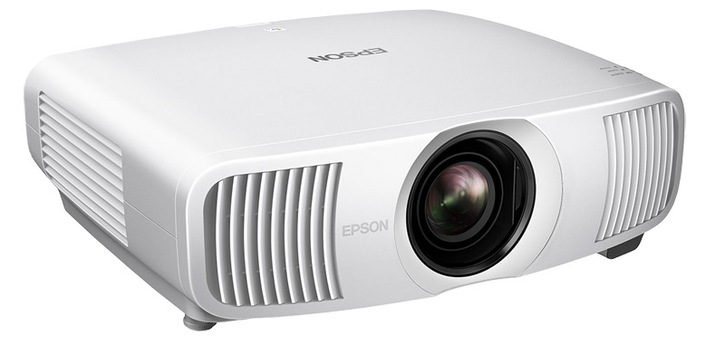In the world of consumer and professional display devices, a "pixel" (picture element) is the smallest individual unit that makes up the picture. On a 720P HD display, there are a total of 921,600 pixels, while an 8K UltraHD display includes over 33 million pixels. The more pixels you have on screen, the more detailed the picture can be.
In display devices, the term "pixel shifting" has two meanings: one for TVs and a different one for projectors. Pixel shifting on plasma and OLED displays is a technique used to prevent screen burn-in. By subtly shifting the on-screen image, the display can prevent any individual pixel from having the same signal on it for extended time periods, and this can prevent temporary image retention or burn-in. This type of pixel shifting is typically enabled in a TV's set-up menu and it may be turned on by default. Pixel shifting on these displays is not normally anything that affects perceived image quality.
On projectors, pixel shifting is a bit different. Pixel shifting on projectors is a technique used to increase the perceived resolution of an imaging device. To understand how and why it's used, we need a little background.
Display devices and video formats have evolved over time to support higher and higher screen resolutions. From the 480 lines of vertical resolution in legacy analog TV broadcasts, to 720 and 1,080 lines in High Definition, to today's Ultra HD resolutions with 2,160 lines (4K) and 4,320 lines (8K), displays and content formats have advanced to keep pushing the envelope of picture quality. In the case of flat panel displays like OLED and LED/LCD displays, the only choice to increase resolution is to make smaller and smaller dots (pixels).
With projectors, the impressively large image you see on screen comes from a tiny imaging device. A DLP (Digital Light Processing) micro-mirror device, LCoS (Liquid Crystal on Silicon) chip or LCD (Liquid Crystal Diode) chip may be as small as 1/2 inches diagonally. Zoom lenses in projectors enlarge the images produced by these devices into the big picture we see on screen. Attempting to pack more pixels into such a small device can be a real challenge. And when companies do create denser, more detailed imaging chips, they typically cost significantly more than the lower resolution devices. So projector makers have developed a technique which allows existing imaging chips to display more pixels on screen than are physically included on the device itself. This is done by shifting the pixels on screen to make more dots: "pixel shifting."
On a traditional projector, each pixel on the imaging device corresponds to a pixel on the screen. It's a one-to-one ratio. When pixel shifting is employed, each pixel on the imaging chip is shifted very quickly by a microscopic amount. This allows the chip to display one pixel at the original location and a different shifted pixel next to it (or technically, diagonally adjacent to it) a fraction of a second later. The result is twice the number of visible pixels on screen: twice the detail.
With faster, more advanced optical components and processors, each individual pixel can be shifted three times for a total of four times the number of pixels displayed on screen. Using this technique, a 1080p imaging chip can reproduce full 4K resolution and a 4K chip can reproduce full 8K resolution. Epson calls this type of pixel shifting "4K PRO-UHD quad-phase, dual-axis pixel shift technology." JVC calls their latest version "8K eShiftX." Texas Instruments (makers of DLP technology) call theirs "True 4K DLP Technology."
Some claim that pixel shifting isn't as effective as a true higher resolution imaging device, but with our human eyes, the "persistence of vision" makes it difficult if not impossible to see a difference between pixel shifted signals which flash on the screen very quickly and native images of the same resolution. But this doesn't mean that all pixel shifting is the same.
Epson offers two different types of pixel shifting. Epson's standard pixel shift, which is sometimes called "4Ke" (4K enhanced) shifts each pixel once diagonally, thereby doubling a 1080p LCD chip's effective resolution. But twice the resolution of 1080p is still only half the resolution of 4K. So while these 4Ke projectors support 4K sources, and also support HDR (High Dynamic Range), they aren't reproducing the full detail of Ultra HD 4K content. Meanwhile Epson's quad-phase dual-axis pixel shift does support full 4K resolution. Sadly, Epson's marketing material makes it very tricky to determine which Epson projectors use standard pixel shifting and which use quad-phase, dual axis pixel shifting. Their LS800 UST projector uses standard "4Ke" pixel shifting while their LS11000 and LS12000 long throw projectors use quad-phase dual axis pixel shifting.

And it turns out that the actual number of pixels on screen may not be the most important element in perceived picture quality. In most cases, contrast, brightness and color reproduction actually contribute more toward overall picture quality than resolution. In fact, the ISF (Imaging Science Foundation), the industry reference for display quality, ranks "detail" (resolution) as fourth on the list of elements that contribute toward overall picture quality. Some lower resolution displays can actually be perceived as being "more detailed" when they offer superior contrast and color performance compared to a higher resolution display.
When evaluating a projector, don't be overly concerned about any one number or specification. The best displays perform well on a variety of different tests and sometimes the overall display quality is more than just the sum of its individual specs. If a projector you're considering buying uses pixel shifting to increase the overall resolution, know that this is not a "cheat" but is an effective way of increasing visible resolution without the high costs associated with a higher resolution imaging chip.
Related Articles: